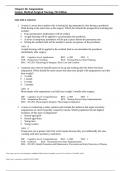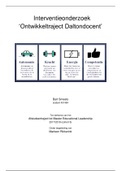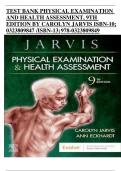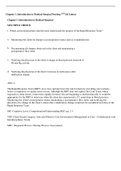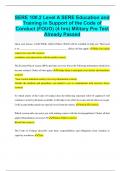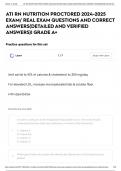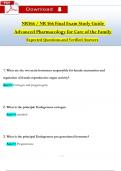Exam (elaborations)
Chapter 46: AmputationsLinton: Medical-Surgical Nursing, 7th Edition questions with 100% correct answers Download for an A+
- Course
- NURS 212
- Institution
- Columbia College (CC )
1. A nurse is aware that a patient who is having his leg amputated is also having a prosthesis fitted during at the same time as the surgery. Which fact should the preoperative teaching plan include? a. Extra preoperative medications will be needed. b. A rigid dressing will be applied to accomm...
[Show more]
